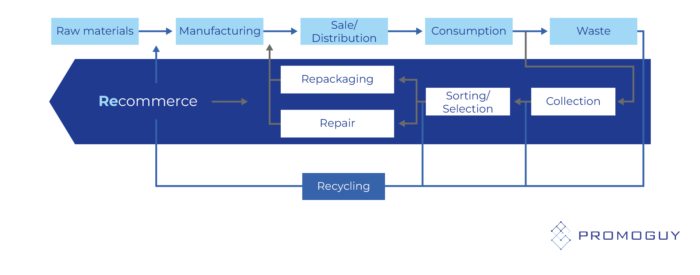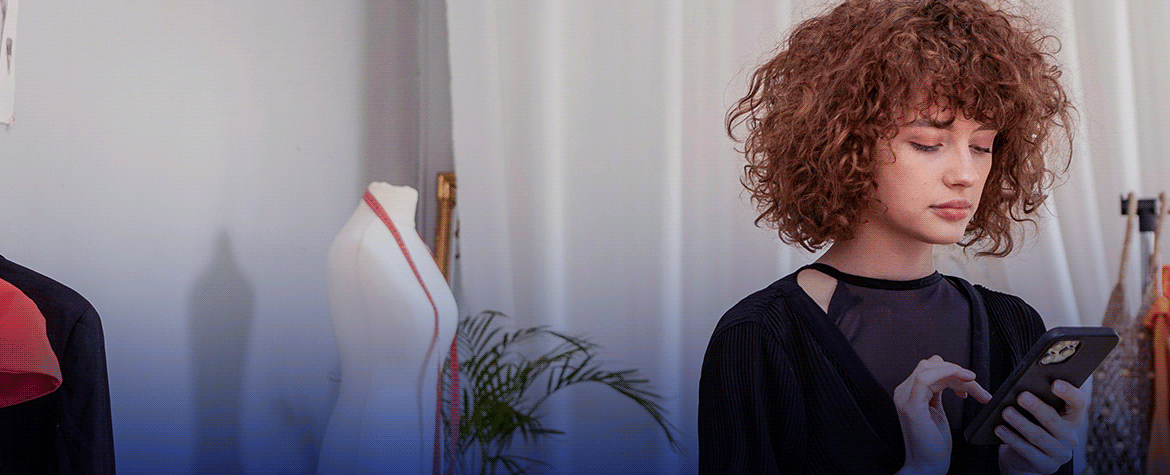Digital retail and shopping have climbed in popularity in recent years, especially when it comes to clothing. The online fashion eCommerce industry is predicted to grow to $872 billion by next year and even more in the foreseeable future. With this in mind, anyone aspiring fashionista or retailer looking to make their way into this lucrative but crowded field needs a proper fashion marketing plan.
This article will discuss the latest fashion marketing research for online businesses of any size and or anyone wanting to know how to be successful at selling clothes online.
Fashion & Digital Marketing
SEO, advertising, content, and platform strategies form the crux of any fashion brand’s social media strategy. Here are a few ways to optimize your experience with fashion marketing campaigns.
SEO for Fashion eCommerce & Marketing

Fashion SEO should be a significant part of your digital marketing arsenal. SEO helps find customers that are in the research phase or looking for something very specific that PPC ads didn’t capture. PPC ads will often be dominated by major retailers, so SEO can often be a great alternative when done well.
Retail fashion outlets have their own dedicated stores, so they can often dominate PPC. However, smaller companies can find cracks in the market with long-tail SEO keywords. The more specific you get, the better your chances of finding an audience. You can do this by describing your items with precise detail so they catch exact keyphrases someone might search for.
Fashion & Clothing Ads
PPC ads can be especially useful for finding an audience that wants your specific products. It’s less likely to attract people who are unsure about what they want, so it belongs in the latter stages of the funnel. It’s particularly useful to use branded terms so that your competitors don’t end up seizing potential customers. However, this strategy works both ways, so it’s good to analyze gaps in your competitor’s keywords and offer your products to their customers.
Try to reengage with new customers, site visitors and loyal shoppers, using remarketing. You can create remarketing lists with all sorts of ads at each touchpoint of the customer journey. These efforts can give customers a chance to reconsider your product, especially if they were only window-shopping but have now developed more certainty.
Fashion Content Ideas & Tips
Content is a crucial pillar of online activities as it generates another thing any fashion brand needs: emotional resonance through branding.
- Fashion content creators and influencers are a big draw for platforms like Instagram.
- Go Oldschool: Get yourself some fashion magazine ads or distribute physical flyers with discounts.
- Create YouTube videos about your process and what makes your brand resonate.
- Use the Instagram product tagging feature to link to your stores.
- Try affiliate marketing with creators who fit your brand’s style instead of creating your own content.
Fashion Promotion on Crucial Platforms

This section provides digital marketing strategies for fashion and luxury brands to succeed on a per-channel basis. But first, we need to go over some significant numbers. Data shows that the best apps to sell clothes in 2022 were:
- Depop
- Vinted
- eBay
- Facebook Marketplace
- Etsy
- Style Alert
Fashion Marketing & eCommerce Store Management
While every store is different, some overarching trends can help you capitalise on the market.
- Recommerce: Recycling and making use of second-hand stores has grown immensely
- Major items in the second-hand market include causal wear, accessories, footwear, and outerwear
- This is part of a larger trend where consumers are trying to cut down on clothing spending

- Sustainability: Sustainable and ethical fashion has been growing among consumers (particularly those that can afford it)
- Non-biological, faux leather has seen a massive uptick in recent years
- Consumers are also more responsive than ever to fairtrade goods
How to Sell Clothes on Instagram & TikTok
Instagram and TikTok are great for selling clothes because they are much more visual platforms than most others. Both platforms have a dearth of influences looking for projects to promote. They also have a marketplace in most regions where you can sell your items.
To sell clothes on Instagram, you need to decide on the right clothes and match them to your profile style. Your content needs to also attract the right people so, for example, if you’re selling vintage clothes you might want to give your profile a vintage feel. Post evocative pictures that centre the clothing and make customers want to buy them.
Next, you need to explore the right hashtags and keywords to go along with the content. As mentioned earlier, the more specific you get, the higher the chances of finding a buyer. You should also use the Instagram product tagging feature or TikTok’s brand marketing options.
Some extra tips:
- Use CTAs
- Offer discounts and deals
- Engage in promotions or work with other influencers if possible (have them model your clothes)
- Keep posting contact that grows your subscribers
How to Sell Clothes on Amazon
Selling clothes on Amazon can seem straightforward on a basic level but there are a bunch of decisions you need to make:
- Choose a fulfilment method: Fulfilment by Merchant (FBM) or Fulfilment by Amazon (FBA)
- Choose a business model that best defines your product
- Private label: Distribute under your own brand, operate as a first-party seller and engage in your own marketing.
- Handmade: Under this option, you will be charged a flat percentage instead of monthly seller’s fees. This is an artisan mode of operation on a per-client basis. Under FBA, storage and fulfilment fees can apply.
- Retail arbitrage: Reselling approved clothing from other stores. Requires a decent starting budget.
- Wholesale: Buying clothes in bulk and then selling them via Amazon’s fulfilment facilities. You will need to get approval for each brand you want to offer from Amazon.
- Get registered and create a product listing. You need to apply to sell on Amazon.
- Promote your products via Amazon’s marketing options
- Do some market research
- Optimize your keywords
- Pay for ads on Amazon or work with an external marketing agency
- Create your social media promotion channels
- Offer deals and discounts when you can
- Find amazon fashion influencers on other channels
- Instagram and Etsy are both great places for influencers
How to Sell Clothes on Etsy
To sell clothes on Etsy, you need to first sign up properly:
- Go to www.etsy.com/sell
- Click on “Get Started”
- Choose your language, your location, and the currency you operate with
- Enter a name for your shop
- Click “Save and Continue”
Once you’ve got the particulars of your store out of the way, you need to get to the brass tacks. If you want to sell with efficiency, you need to:
- Post engaging visual content. Make sure your photos look professional and hire models if you can.
- Do keyword research, target audience research, and provide precise, in-depth descriptions.
- Consider the global market
- Set rates for every country you can distribute to
- Consider that sizes and measurements vary from region to region
- Make your policies consistent and clear for each region
Best Fashion & Retail Marketing Solutions

Many platforms come with various tools that can be crucial for retail market research. Some examples, are Amazon and Facebook market place which can offer you great data. Be sure to install Facebook and Google pixels to optimize your data gathering.
Here are some external tools that can also be helpful.
- SEMrush: Analyze your domains and traffic, find the best keywords, and monitor PPC prices. You can also get content ideas and monitor your rivals.
- HubSpot: A great tool for sales groups and marketing specialists to push their products and manage campaigns.
- Canva: You’re going to need some great graphic design. While Photoshop and similar software packages are great, they can be laborious, pricier, and slower on the learning curve.
- Google Analytics: Keep track of your analytics and searches to see where your campaigns need to move next.


